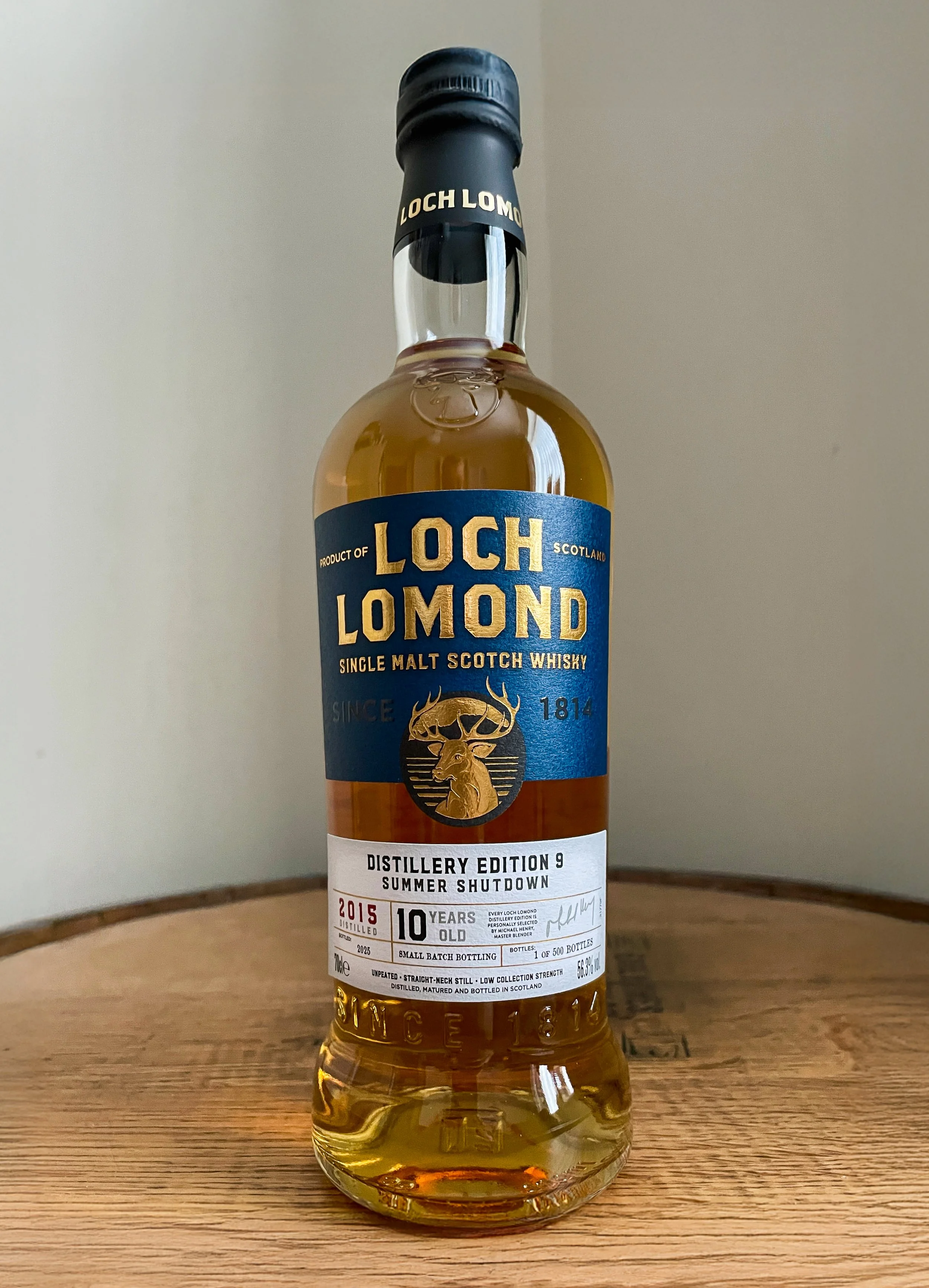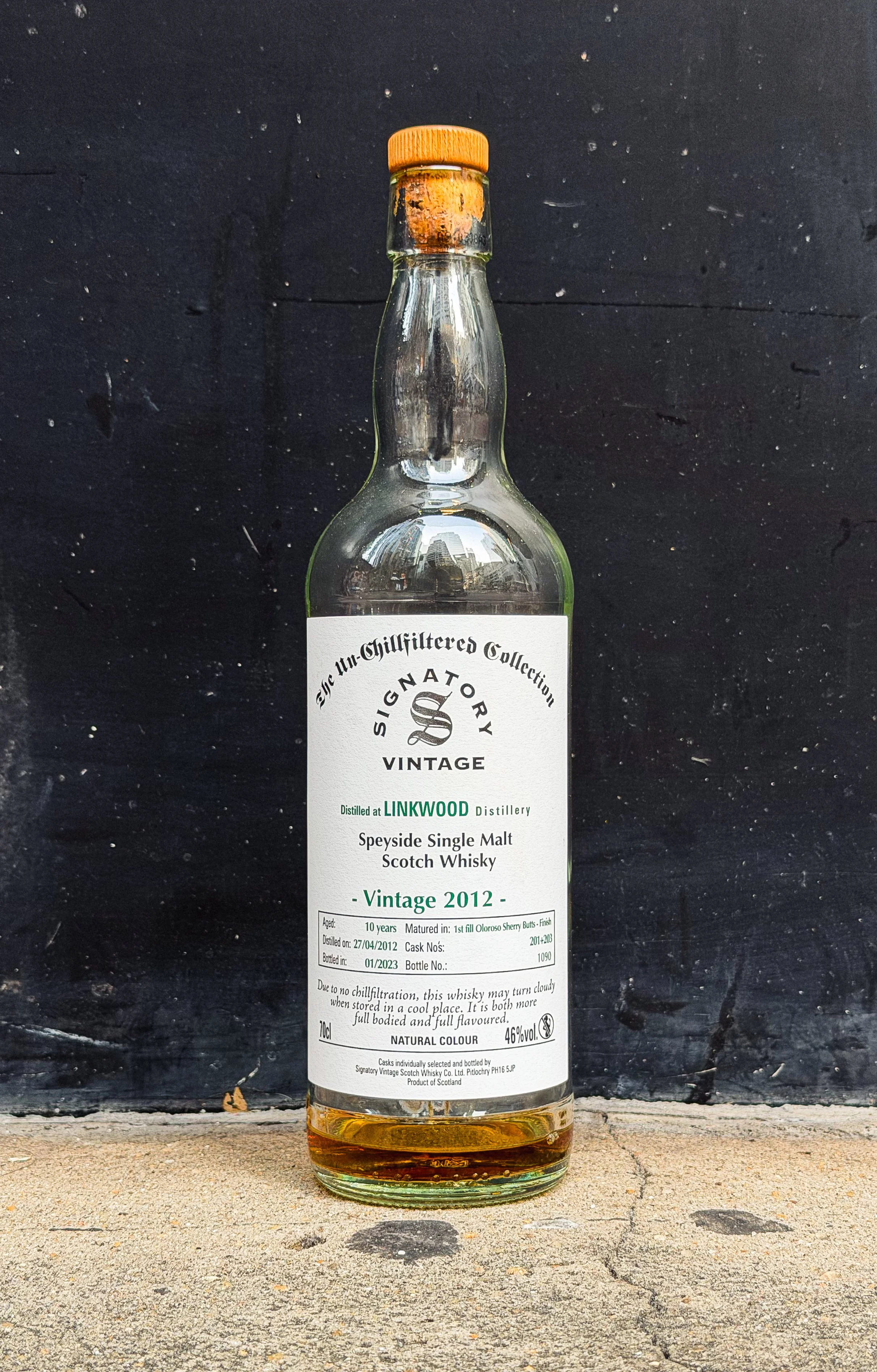Glengoyne 10yo
Official Bottling | 40% ABV
Score: 6/10
Good stuff.
TL;DR
At this price, it’s a charmer. Few frills, not many thrills, but it is moreish
Returning to Ten Years Ago
It is so much easier to reduce your asking price than increase it.
At least that is what the considered business opinion makes out, and it is a point hard to argue with. Sadly, for whisky producers, price increases often have nothing to do with the actual product. Rather, suppliers’ fees and taxes (costs entirely out of the control of the distiller or bottler) force the movement of price in the wrong way.
Take glass bottles as an example. Prior to Covid, a standard glass bottle may have been around £0.35p per unit. Post, the unit price shot up to £0.55 and has crept its way much higher. Not helped by a fire at one of the UK’s largest suppliers, this increase gets multiplied when the final product is in front of the consumer. Cartons, corks, labels, distribution, and taxes have all nearly doubled in the last 5-10 years (the tax is from a UK perspective).
For some time, the malt whisky producer took these increases in their stride. Premiumisation negated any potential loss in profits. “We can’t bottle enough to keep up with demand” was being repeated from many a brand ambassador or salesperson when confronted with rising prices. But premiumisation only works when there is a growing customer base, and just as importantly, one with an ever-increasing disposable income.
Roll on to where we find ourselves now, and this is no longer the case. Folks are jittery about living costs, about what happens to their disposable income and as far as malt whisky drinkers are concerned, the over-premiumisation of the category.
The problem, as I see it, is that you can’t have ‘Glen Whatever’ telling customers that costs are ‘X’ when they can go buy ‘Glen Somethingelse’ considerably cheaper, and would be hard pressed to tell much of a difference. In other words, premiumisation is the Emperor’s New Clothes if the quality (or difference) of the product doesn’t equate to some sort of sensory reward.
Glengoyne Distillery, which was bought by Ian Macleod Distillers in 2003, immediately set about a course of brand premiumisation. Prior to their ownership, Glengoyne whisky could be bought at very favourable prices from small off-licence chains and supermarkets. It had a cult following – those who knew would whisper in corridors of its virtues and value for money. This perspective changed when prices steadily rose – especially for the aged expressions. Many malt drinkers moved on to more robust malts – often at cheaper prices. Glengoyne continued to gain traction as, in reality, nearly all malt whisky did. For a time.
I haven’t bought a bottle of standard Glengoyne 10-year-old, for quite some time. There’s a lot of choice out there to taste and, as I said, malt drinkers move on – we’re a promiscuous bunch. I was prompted to buy this bottle when I spotted it in Tesco’s (the largest chain of supermarkets in the UK) at a very reasonable £29. With the 10% discount achieved through one of their loyalty programmes, this bottle was £26.10 – hard to say no at that price, and it brought with it the inspiration for another Dramface review.
Something to consider is that you would have to go back at least 10 years to find Glengoyne 10-year-old being retailed at this price. As already mentioned, costs have almost doubled in that following decade. Was Ian Macleod targeting a large profit margin, or are they now facing a minuscule one, or is it somewhere in between? Or am I reading too much into the head-scratching prices from Tesco’s? The Glengoyne offer was not an isolated bang-for-your-buck bottle. Ardbeg 10yo had £10 off, Laphroaig 10yo was £26, Highland Park 12yo was £28, Loch Lomond 10yo was £25, and so on (too many other single malt expressions beginning with ‘T’ to mention – and none enticed this drinker).
I feel the need to add that I buy very little whisky from Tesco. There is no voyage of discovery with a purchase, and I do not get any sense that my meagre monetary exchange is benefiting the industry much. I would rather buy this bottle for considerably more from a specialist – but then, frankly, I am not looking for a Glengoyne 10-year-old from a specialist, am I?
Support your local specialist. You’ll miss them when they’re gone…
Review
Glengoyne 10yo, Official bottling, natural colour,40% ABV
£26 paid, widely available
Score: 6/10
Good stuff.
TL;DR
At this price, it’s a charmer. Few frills, not many thrills, but it is moreish
Nose
This is a malt-forward bottling. The colour is quite pale, and we are reassured that this is natural from the info on the carton. Barley Sugars (a boiled sweet), malty. Soft. That sounds a bit glib or simple, but the nose is, well, soft. I’m not necessarily complaining here – there is no nose prickle, no burn, nothing to make my eyes run or blink.
There is a delicate apple note with very mild toffee – both mentioned on the carton, so nice to see that someone agrees with me (and me with them). A certain perfumed note reminds me of clothes detergent – again, this is not a negative, as I am not thinking of anything overly chemical here.
Palate
Again, this whisky is soft. The barley sugar returns along with sweet pastry flavours. It is very malty and pleasant not to have any powerful Sherry notes or any previous contents dominating the flavour (although it is quite evident that many of the casks, if not all, are ex-Bourbon). I would love to have seen this at 46% and non-chill filtered as you just cannot help but feel that some of the guts have been ripped out of this whisky.
The Dregs
The awkward term daily-drinker comes to mind. This is a bottle for easy drinking, quaffing with friends, socialising and not really caring too much about product dissection. That alone should give it an extra point. At the price I paid, I would happily bring this to a friend’s house for a game of cards or a chat around a roaring fire. Other than it being a touch gutless, and blame those naughty taxes and supermarket margins for likely forcing producers to maintain this 40% standard, there is nothing to fault and a lot to enjoy.
I can see myself downing much of this whilst reading a book or watching a movie etc. At the very least, despite their drive for premiumisation, Ian Macleod has maintained a quality benchmark 10-year-old from Glengoyne.
When it’s at this price, I can see many a malt drinker discovering it either for the first time, or again.
Score: 6/10
Tried this? Share your thoughts in the comments below. FF
-
Dramface is free.
Its fierce independence and community-focused content is funded by that same community. We don’t do ads, sponsorships or paid-for content. If you like what we do you can support us by becoming a Dramface member for the price of a magazine.
However, if you’ve found a particular article valuable, you also have the option to make a direct donation to the writer, here: buy me a dram - you’d make their day. Thank you.
For more on Dramface and our funding read our about page here.


































